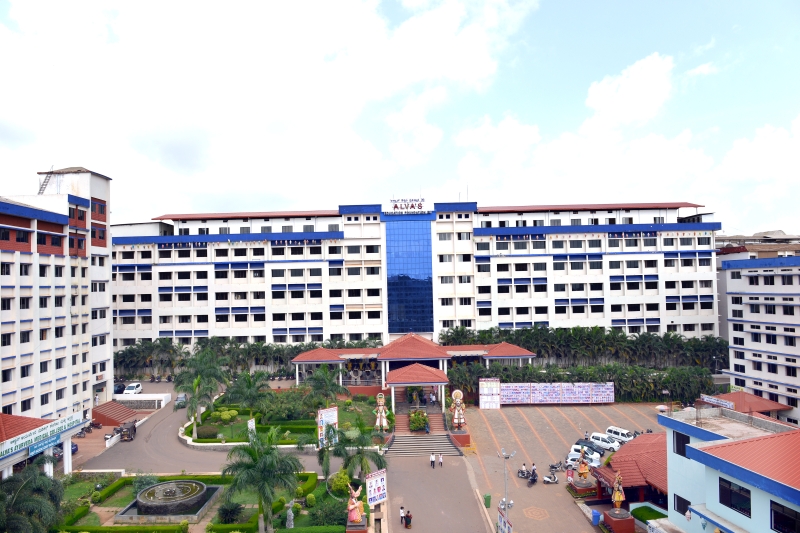
Alvas Campus
Alva’s Education Foundation®, the crown of Moodbidri and A dream child of Dr. M Mohan Alva, a visionary genius with an ability to spot talent, youth potential and amazing fund for resourceful ideas for reinventing and restructuring social cultural and ethnographic milieu of society, is founded to cater the budding talented youth of the society. He firmly believes in the reforming power of education and also its potential for social change.
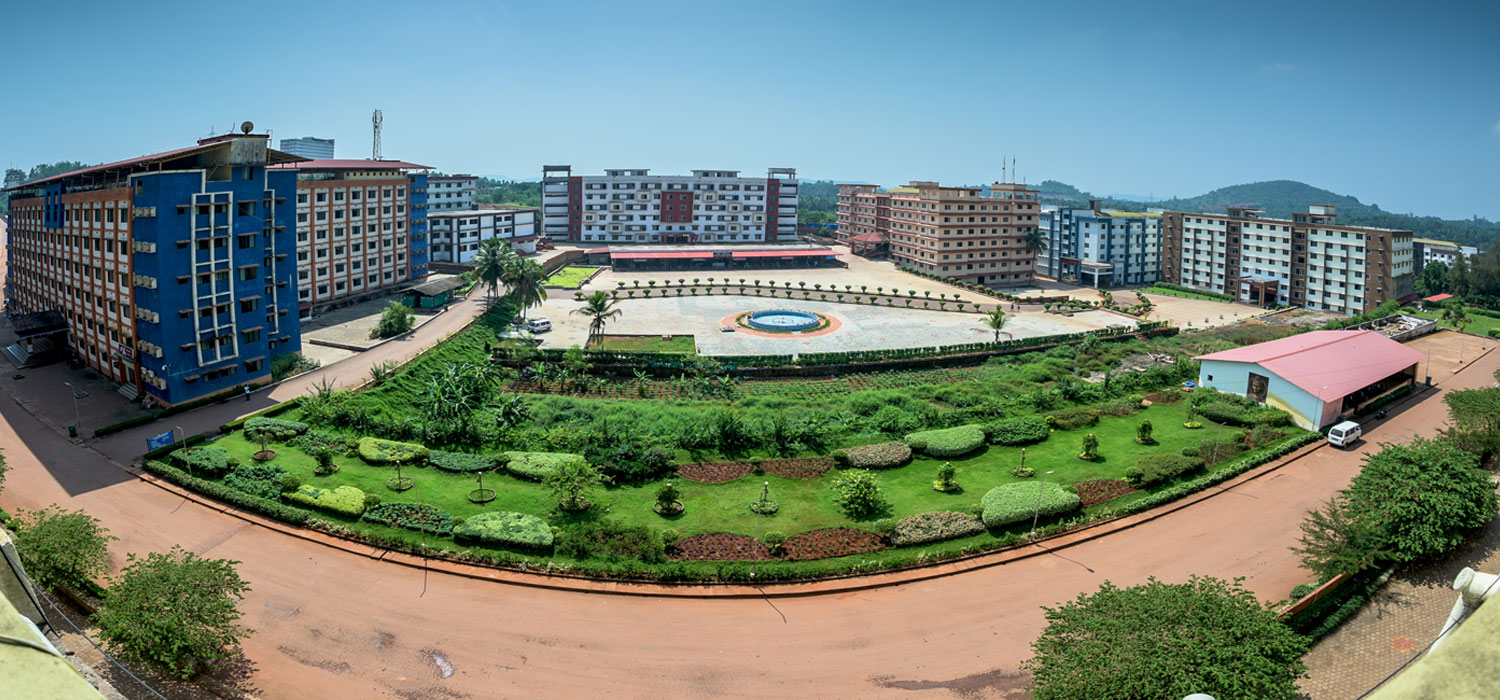
Alvas Front
Alva’s Education Foundation®, a dream child of Dr. M Mohan Alva, a visionary genius with ability to spot talent and youth potential. He firmly believes in the reforming power of education and its potential for social change. The institutions, under the auspice of the Foundation are a testimony to his far-sightedness and a sheer faith in the youth potential to reach greater heights.Alva’s Degree College is one among the institutions of Alva’s Education Foundation,
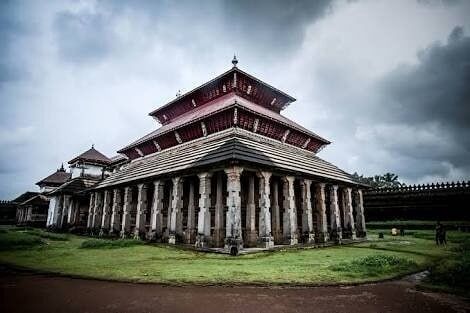
Thousand Pillars Basadi,Moodbidri
The Thousand Pillars Temple was built in the 15th century by local ruler Devaraya Wadiyar.
Temple was renovated in 1962. Each of the thousand pillars is dotted with exquisite rock carvings. Interesting fact about the pillars is, it is believed that no two pillars are said to be alike. The perfection of the stone carvings, the symmetry and intrinsic details will leave visitors in awe of this marvelous and detailed architecture.The 50 ft tall monolith Mahasthamba (Giant Pillar)
.
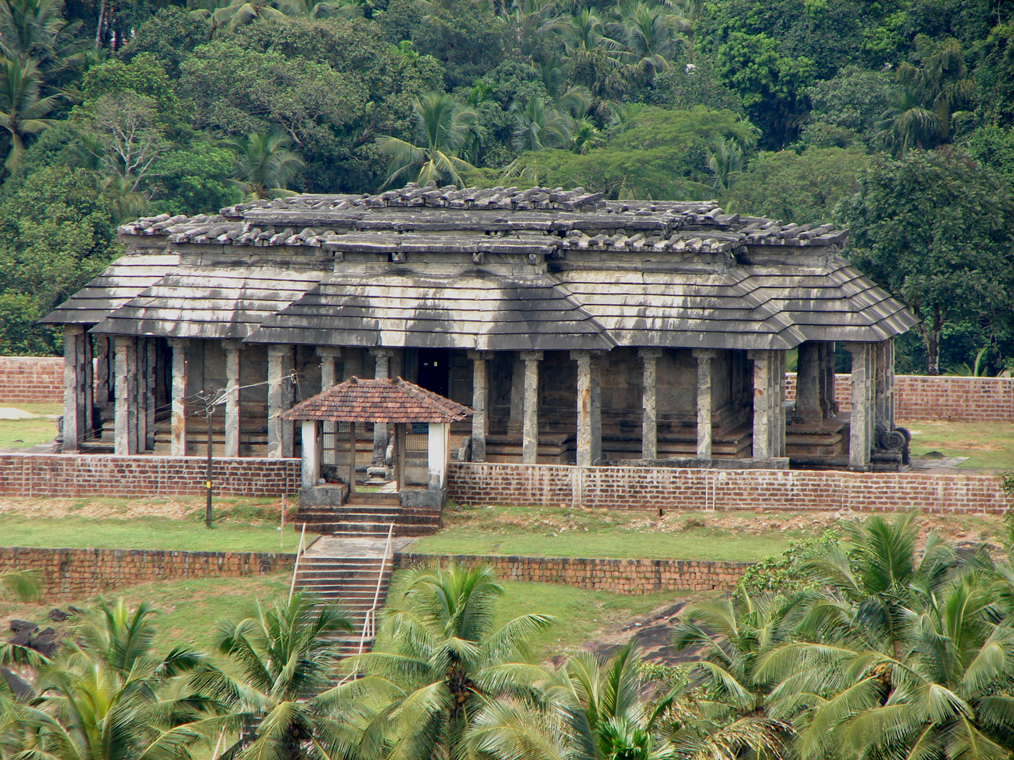
Chaturmukha Basadi, Karkala
Karkala is an important Jain pilgrimage site. The town has a number of historical and religious landmarks of which the Chaturmukha Basadi is the most well-known. The temple gets its name from its unique architectural plan wherein the temple is open from all sides.There are many Jain monuments in Karnataka. Jainism may not have originated in Karnataka but it has a long association with the state that dates back to the 3rd century BC. When Chandragupta Maurya renounced his kingdom to become a monk.
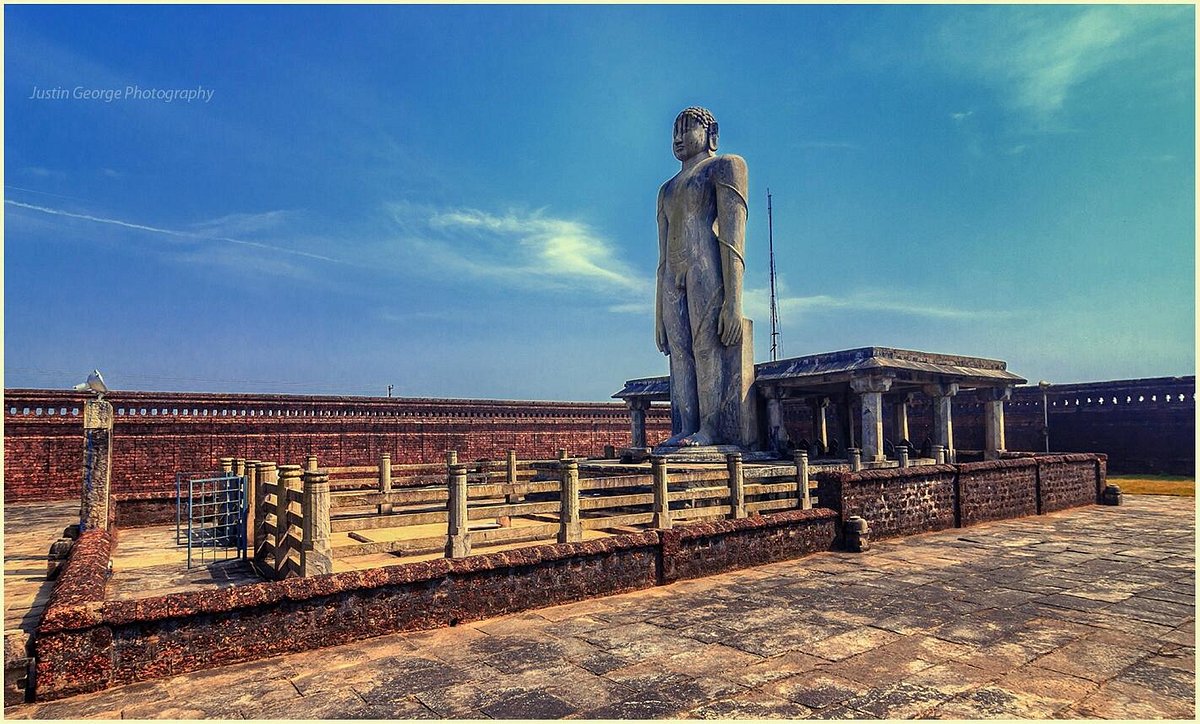
Gomateshwara Karkala
It is second largest Bahubali or Gommeteswara statue after Shravanabelagola is in Karkala, and it is 41 feet single stone beautiful statue erected on a small hillock. Beautiful scenary from hillock, historical place and great ancient architecture
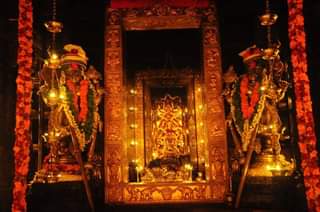
Sri Venkataramana Temple. Karkala
Karkala Shree Venkataramana Temple, an ancient temple having a history of 550 years, belongs to Gauda Saraswat Brahmin Samaj. For various reasons Gauda Saraswat Brahmins migrated from Goa, their ancestral land for centuries, and settled in the location of Karkala. They erected a small temple, enshrined Lord Shree Venkataramana in it and worshiped him for the betterment of their religious, cultural and social welfare. Eventually, devout followers in large numbers thronged this Devasthana (temple) and the Shrine earned the name of Padu Tirupathi Kshetra. To this day the temple continues to attract a great number of devotees.
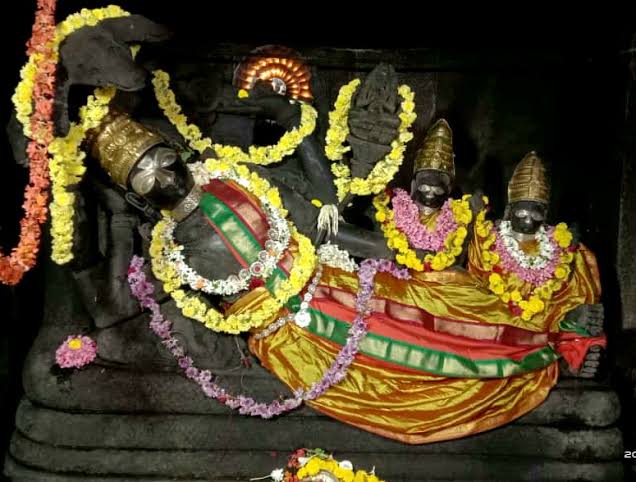
Sri.Ananthashayana Temple
At a distance of 37 Kms from Udupi & 50 Kms from Mangalore, Sri Ananthashayana Temple is an ancient temple located in Karkala. This temple is dedicated to Lord Ananthapadmanabha (another form of Lord Vishnu). This temple is situated near Sri Venkata Ramana Temple (about 1 Km) & Chaturmukha Basadi (about 1 Km).
This temple was originally a Jain Basadi in 15th century. During that time, Sringeri Jagadguru Sri Narasimha Bharathi Swamiji came to Karkala and the Jain King gave him a warm welcome. But Swamiji said he will stay only if there is a temple with Lord installed in it. The king gave the Jain Basadi to His Holiness Sringeri Swamiji and installed a stone sculptured of Lord Vishnu.
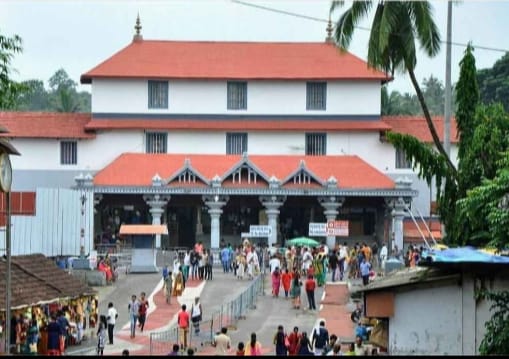
Shri Kshetra Dharmasthala
Shri Kshetra Dharmasthala, the land of righteousness and piety, is one of south India’s most renowned religious landmarks with a history as old as 800 years. Manjunatheshwara, the chief deity of the spiritual abode, has taken the form of a shivalinga and made immaculate, the temple town of Dharmasthala since and forever. Lord Manjunatheshwara, is being worshipped in a very unusual yet exceptionally inordinate manner in Shree kshetra dharmasthala, as this Shaiva temple is beseeched by Vaishnava priests and administered by Jain descendants.
“Dharmasthala”, the abode of dharma, is the quintessence of humanity and faith.
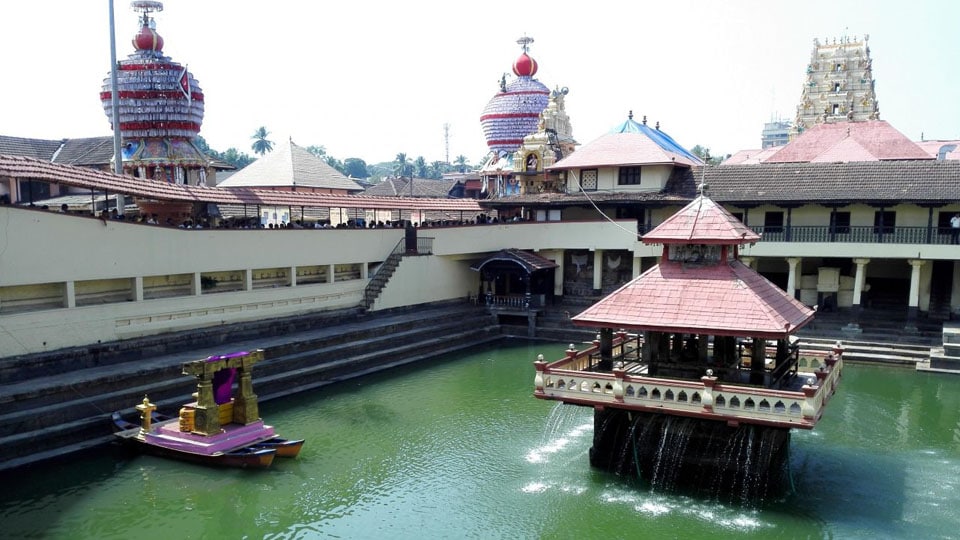
Shree Krishna Mutt temple
Udupi Krishna Mutt- Udupi Sri Krishna Matha temple is dedicated to god Krishna located in the city of Udupi in Karnataka . Udupi is first among the seven places of pilgrimages. Thousands of pious devotees throng the Krishna temple all round the year to catch a glimpse of Lord Krishna. The unique feature of Shree Krishna temple Udupi is that the Lord is worshipped only through a window with nine holes called the Navagraha Kitiki. The window is exquisitely carved and silver - plated. It has been a tradition in this temple to worship the Lord only through this window. Surrounding the Sri Krishna Matha are several temples namely the Udupi Anantheshwara Temple which is over a 1,000 years old. The matha area resembles a living ashram, a holy place for daily devotion and living. Surrounding the Sri Krishna Matha are several temples.
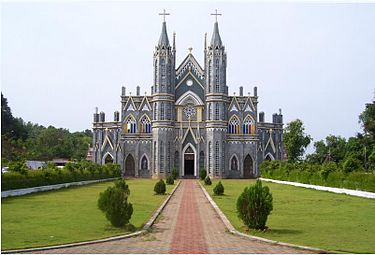
Saint Laurence Basilika
Welcome to Saint Laurance Basilika.
The whole year round the pilgrims irrespective of caste and creed, come to visit the Shrine. People believe that St. Lawrence indeed is a powerful intercessor before God. Not only the people of Attur and the pilgrims that visit the Shrine, but also even those who without visiting the shrine, still pray for help from the Saint, have felt the helping hand of St. Lawrence.
The great number of pilgrims that visit the shrine during the Feast and throughout the year is a testimony that the Saint does not refuse those who approach him with trust and confidence.
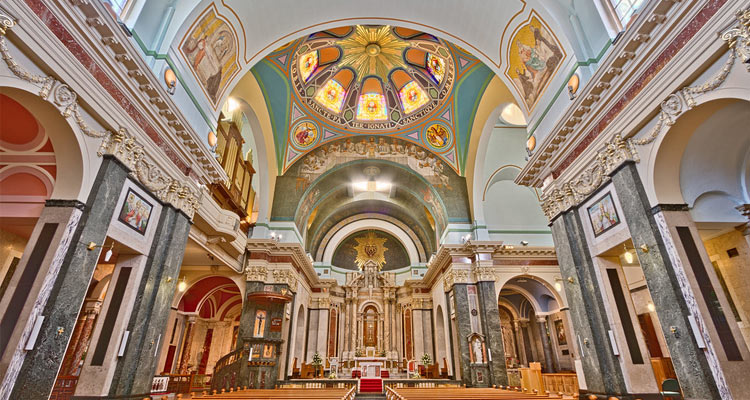
Saint Alosius Chappel
St Aloysius College was built in 1882. The southern wing of the building formed the Chapel as a place of prayer for students. The Chapel built in 1885 by Rev Father Joseph Willy, is a replica of world renowned Sistine Chapel at Rome. The main part of this chapel is a large hall, which is called the nave. On either side of the nave are the two aisles. The raised platform is called sanctuary. Touching the wall of the sanctuary is the main alter.The paintings on the ceiling are canvases, and on the walls, are frescoes. While every painting has its own special appeal, some have a special significance. The Chapel is primarily a place of prayer where people can commune with God. The paintings which adorn it are primarily meant to help us to pray. Their artistic value can be best appreciated in an atmosphere of prayerful silence.The central row of paintings on the ceiling depicts the life of Aloysius Gonzaga to whom this College and Chapel is dedicated.
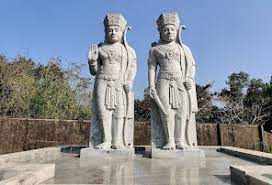
Koti Chennayya Park
Koti Chennaya Theme Park, in Karkala, a folk museum dedicated to the legendary heroes of the bygone age Koti and Chennaya is drawing curious visitors from far and wide. The ambience, with well laid out landscape, traditional architecture and a museum, transports one back to five centuries.
Twin brothers Koti and Chennaya are believed to have lived in the later part of the 16th century. The legendary twin heroes were born to Deyi Baidethi of Billava community in Tulunadu. They lost their mother soon after their birth. Hence they spent their early years under the care of Perumala Ballala, a local ruler, as a token of gratitude towards their mother for treating his grievous injury. The brothers grew up to be valiant handsome heroes. But the coterie around the king considered them a threat and succeeded in eliminating them. This antipathy continued wherever they sought shelter, though the rulers loved them.
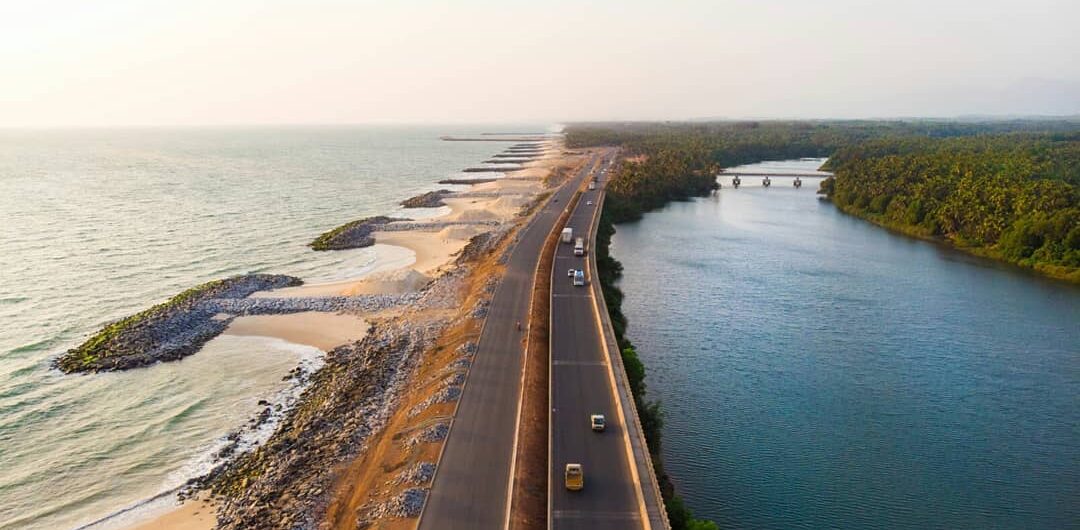
Maravanthe
Maravanthe is a village and a beach in Byndoor Taluk, Udupi District, Karnataka, India. It is about 115 km from industrial hub Mangalore, 55 km from Udupi.18 km from Kundapura. and 21 km from Byndoor. NH-66 runs next to the beach and the Suparnika River flows on the other side of the road
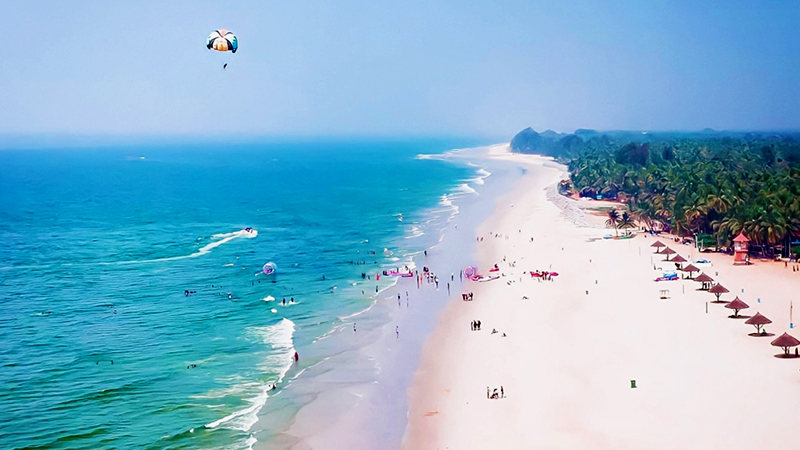
Malpe
Malpe is a natural port in the Udupi District in Karnataka, India. Located at the mouth of the Malpe River about six kilometers to the west of Udupi, it is an important port and a major fishing harbor on the Karnataka coast. The town of Malpe is associated largely with settlements of the Mogaveera fisherman community.
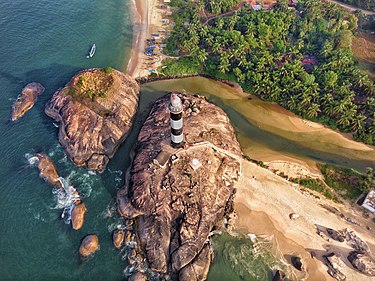
Kapu
Kapu (Kaup) is a town situated in the Udupi district of Karnataka, India. It lies between the twin cities of Udupi and Mangalore, next to the National Highway 66. The villages Manchakal and Shirva are located near Kapu. It is 13 km south of Udupi and 40 km north of Mangalore. It is known for its lighthouse, the three Mariamman shrines, and the Kapu fort built by Tippu Sultan.
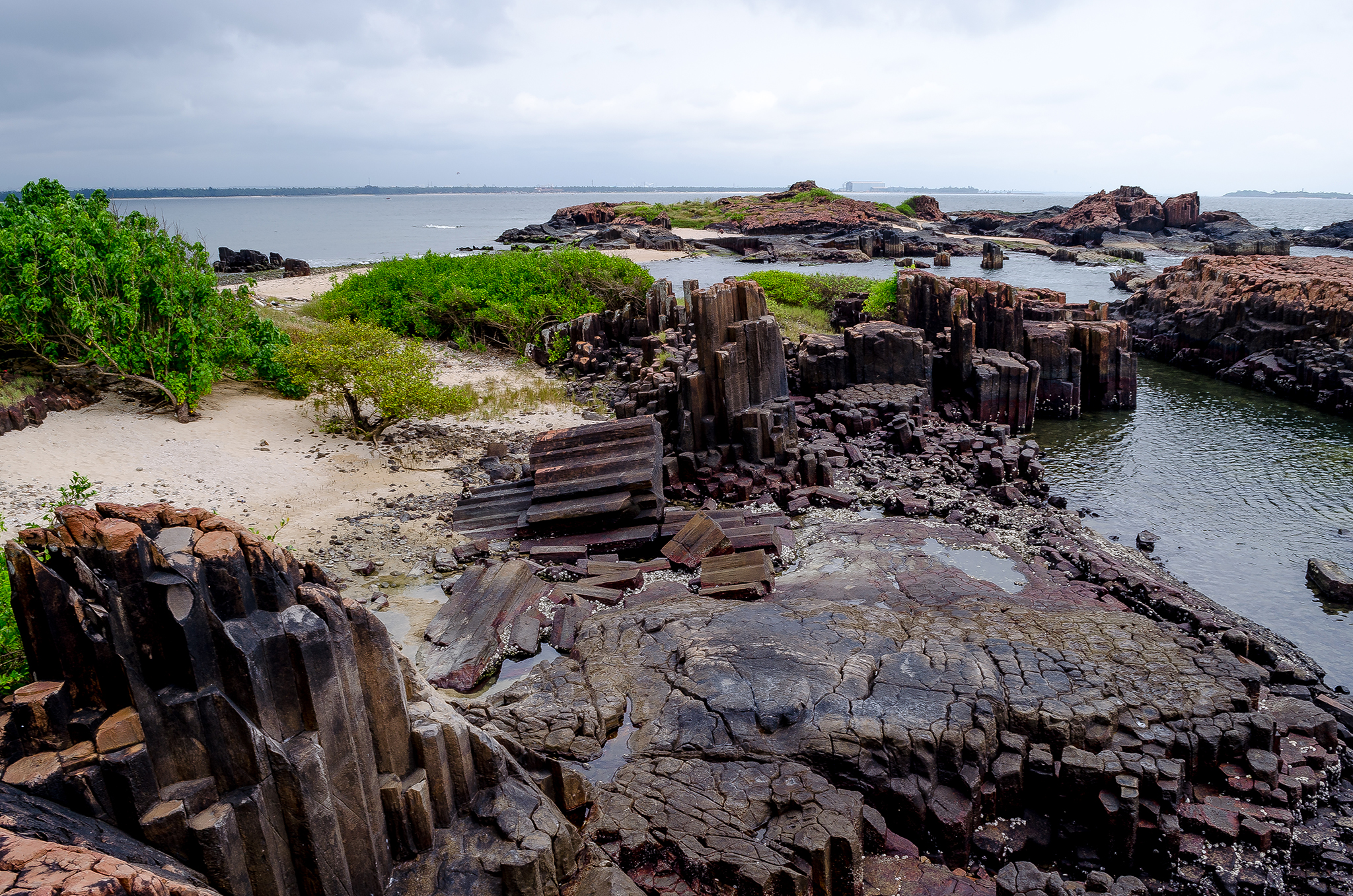
Saint Maries island
St. Mary's Islands, also known as Parashurama dveepa or Coconut Island and Thonsepar, are a set of four small islands in the Arabian Sea off the coast of Malpe in Udupi, Karnataka, India. They are known for their distinctive geological formation of columnar rhyolitic lava.
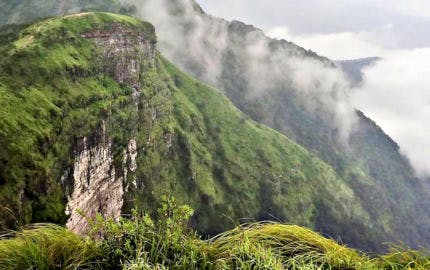
Ballalarayana durga fort
Ballalarayana Durga Fort Trek and Bandaje Arbi Trek are two treks, covered in a single stretch. Studded in the Nilgiris in the western ghats of Karnataka, the trek leads you to a landscape of rolling hills, gushing waterfalls, a canopy of dense trees, boulder-filled paths, vast laid out grasslands and then finally, a dilapidated fort that in the past overlooked at everything to protect. Today, only the broken walls of the fort remain.
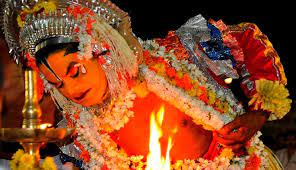
Bhuta Kola
Bhuta Kola is an ancient form of spirit worship practiced by the people of Mangalore. Bhuta Kola is celebrated by the Tulu-speaking communities belonging to South Kannad districts in Karnataka and Kasargod districts of Kerala.
Bhuta Kola in Mangalore is a form of spirit dance that is performed by the people of Mangalore from December to January. Although, the origin of the Bhuta Kola of Mangalore is unknown; yet, Bhuta Kola seems to be an inevitable part of the socio-cultural life of Mangalore.
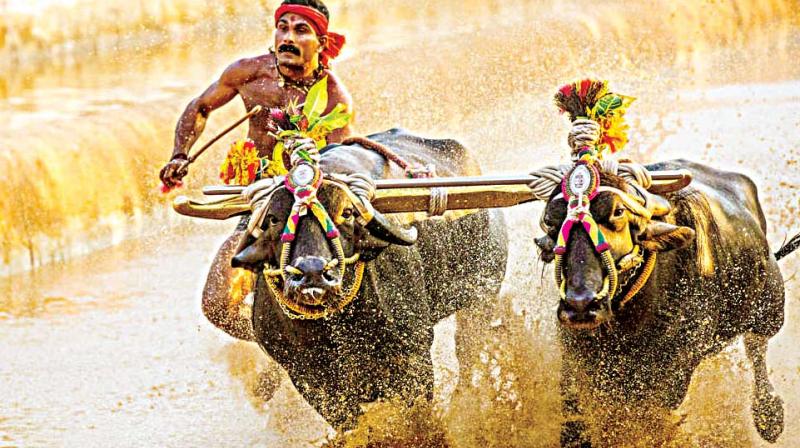
Kambala
Kambala at Mangalore is also known as Kambula. Initially, the Kambala race of Mangalore was organized during the pious occasions of Jumaadi Bhuuta and Kodamantaaya festivals. But, in present time, the event is organized every year during the months of December and March. During these months, the event is organized every weekend.
It is noteworthy that the buffalo race is held in a muddy track. A number of buffaloes are prepared to compete in the race. A pair of buffaloes led by a man, race through a muddy track and a congregation of men cheers the competing beasts. The pair of buffaloes that win the race receives the first prize. The winner pair receives a bunch of plantain and a coconut.
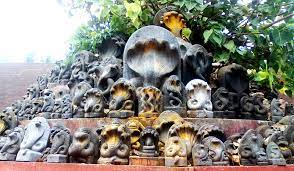
Nagaradhane
Nagaradhane is a form of cobra worship which, along with Bhuta Kola, is one of the unique traditions prevalent in coastal districts of Dakshina Kannada, Udupi and Kasaragod alternatively known as Tulu Nadu, practiced by Tuluva community members. Cobras are not just seen as deities, but as an animal species which should be respected, appeased and protected for multiple social, religious and ecological reasons.
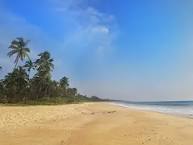
Uchila Beach